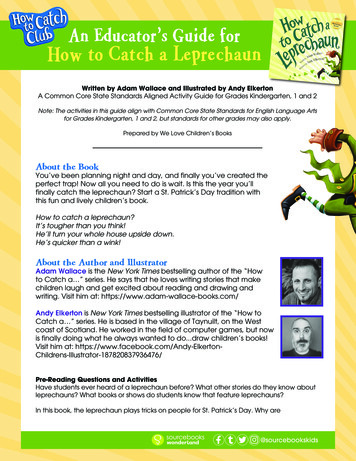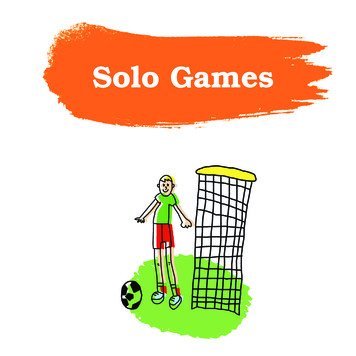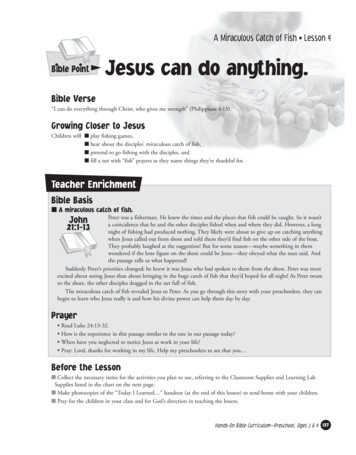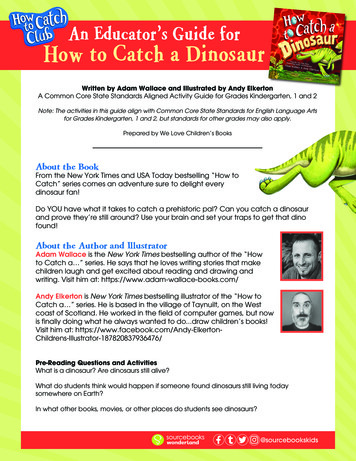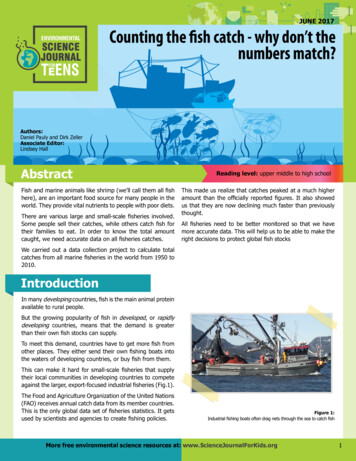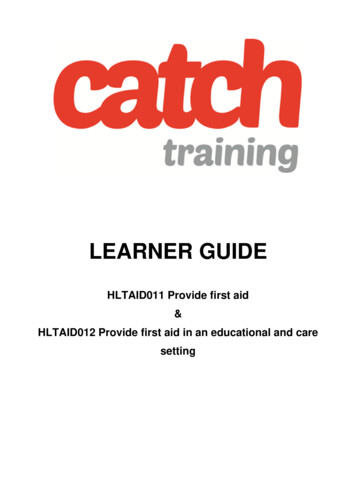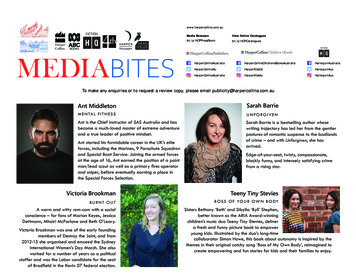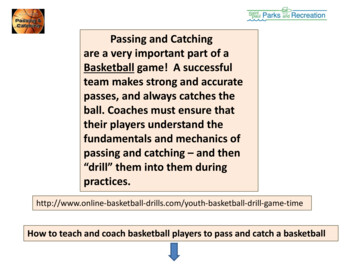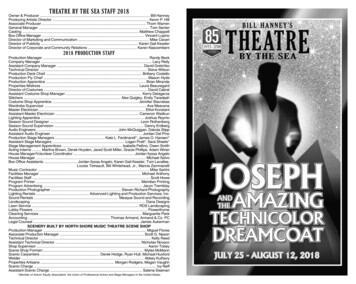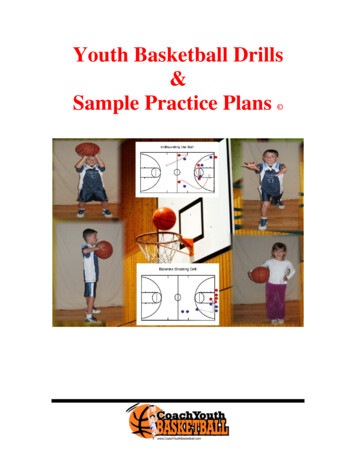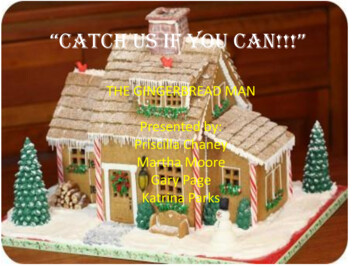
Transcription
“CATCH US IF YOU CAN!!!”THE GINGERBREAD MANPresented by:Priscilla ChaneyMartha MooreGary PageKatrina Parks
Language ArtsThe Gingerbread Man
CCSS CCSS.ELA-Literacy.RL.2.5 Describe the overall structure of astory, including describing how the beginning introducesthe story and the ending concludes the action. CCSS.ELA-Literacy.RL.2.7 Use information gained from theillustrations and words in a print or digital text todemonstrate understanding of its characters, setting, or plot. CCSS.ELA-Literacy.RL.2.2 Recount stories, including fablesand folktales from diverse cultures, and determine theircentral message, lesson, or moral
Essential Questions: Do stories need a beginning, middle, andend? Why? What happens in the beginning, in the middleand at the end of the story, The GingerbreadMan?
Lesson PlanName: Priscilla ChaneyPlan Title: Gingerbread ManLanguage ArtsObjective(s)ProcedureCCSS.ELA-Literacy.RL.2.5 Reading & Writing Workshop MethodDescribe the overallstructure of a story,Essential Question:including describing howDo stories need a beginning, middle, andthe beginning introducesend? Why?the story and the endingconcludes the action.What happens in the beginning, in the middleand at the end of the story, The GingerbreadCCSS.ELA-Literacy.RL.2.7 Man?Use information gainedfrom the illustrations and Anticipatory Set: Activate Prior Knowledgewords in a print or digital What is gingerbread?text to demonstrateGingerbread is a type of cake or cookie flavoredunderstanding of itswith ginger and molasses. Ginger is the root of acharacters, setting, ortropical plant, used as a spice for flavorplot.food. Molasses is a thick, sweet dark brownsyrup made from sugar cane.CCSS.ELA-Literacy.RL.2.2Recount stories, including Gingerbread man is a biscuit or cookie made offables and folktales fromgingerbread, usually in the shape of adiverse cultures, andhuman. These originated in England, and havedetermine their centralbeen adapted to various seasonal themes andmessage, lesson, or moral holidays, such as Christmas, Halloween or Easter.DateGrade Level: 2ndMaterialsPartner/Group discussionReading & Writing PromptResponsesTicket out the doorresponseWhat is Gingerbread?(Wikipedia definition)Introduction:Introduce title and author; Discuss the cover andmake predictions about what the story might beabout and whether it is real or fictional.Modeling: Best Practice Optimal LearningAssessment/EvaluationThe Gingerbread ManCompleted graphicorganizers
Picture cards Picture cards with words
Writing Connections:Some Journal Topics! Why do you think the Gingerbread Man ran and ran? How did the old lady and old man feel at the end of thestory? What would you do to catch the Gingerbread Man? You see the Gingerbread Man talking to the Fox. Whatwould you do? What would you say? Do you think the Fox should have eaten the GingerbreadMan? Why? What if the last animal he saw when he was running was nota Fox but a dog. What do you think would happen in theend?
Additional Activities:
Reading Response Prompts
1.MD.3Tell and write time inhours and half-hoursusing analog and digitalclocks
l telltime to thehour andhalf-hourintervalsusing bothdigital andanalogclocks.(DOK 1)Thestudentswillrecognizeand applymathematicsin contextsoutside ofmathematics.(BestPractices/pp. 166)Name of Unit:The Gingerbread ManDate:July lockAnalogclockDryEraseBoard EvaluationStudentObservationTeacherMade TestThe teacher will ask the essential questions: What is a clock used for? What are the two hands on a clock called?Have students to look at a clock and identify the hour that is shown on the clock. Have students to write the time.Input: (Teaching) (Explain what the objective is and why it is important) The teacher will:*Have students to tell some of the reasons it is good to know how to tell time *Have students to tell the hour andminute hand on the clock *Have students to know that there are 24 hours in a day *Have students to know thateach time is done twice in a day *Tell students that time is told in a.m. and p.m. *Have students to know that a.m isin the morning and that p.m. is in the afternoonModeling: TTW display a large analog clock. TTW model certain times on the clock indicating times to the hour and halfhour. TTW set times on the clock and allow students to volunteer and tell her the time that is shown.The teacher will display a bag with different times in it. Students will be asked on a volunteer basis to come up and pull atime out of the bag. Once the time is pulled, students will be asked to model the time on a large clock that is provided.TTW also: Give students a situation and ask is the time is a.m. or p.m. Have students to write time on the board Tell students that we can go an hour from the time shown Tell students that one hour from a given time means that the minute hand moves around the clock one time back totwelve Show students the time 1:00, model one hour later by moving hand one time around the clock Ask students to tell the timeCheck for understanding:Have students to look at the clock’s face and tell the time, have students to show the time one hour from time shownWork Period: The student will work in pairs modeling a time and the other student will have to show an hour later.Guided practice: (What will the teacher do? What will the student do?) DOKAfter listening to the story on the Gingerbread Man, TTW model word problems about elapsed time about the gingerbreadman. Example: If the gingerbread man jumped out of the oven at 2:30 and it took him thirty minutes to get to the oldman, what time will it be when he makes it to him? Students will work in small group answering and writing a rationale toother questions like the example given.Closing : (Reflection of lesson) Students will explain what the hands on the clock mean.Independent practice: The student will complete an activity in which they will have to show the times and then draw thetime in hour and half hour.Reteach--- Students will look at clock and identify the hour and minute hand on the clock. Students will be told that theyalways say the short hand first when telling time.Enrichment----Students will make a time booklet showing the things that are done at certain times a.m. and p.m.
Essential QuestionsWhat are clocks used for?What are the two handson the clock called?
Types of ClocksDigital ClockAnalog ClockA digital clock is a type of clock thatdisplays the time digitally.An analog clock display timesusing hands. Hands on the clockare called the minute hand andthe hour hand.
Important Facts There are 60 seconds in a minute.There are 60 minutes in an hour.There are 30 minutes in a half hour.There are 24 hours in a day.
What time is it?A. 12:00B. 6:30C. 6:00D. 12:30
Let’stryit!
What time is it now?1. If the gingerbread man ran throughthe kitchen at 1:00 o’ clock and ittook him 30 minutes to make it tothe pig, what time will it be?2. It took him an hour to run from thepig to the cow. What time did hemake it to the cow?3. After running past the cow hemade it to the fox at 3:00. Howmuch time did it take him to getfrom the cow to the fox?
Attachments
Name DateDirections: Write the time in two different waysTELLING TIME TO THE cko'clock:::7.8.9.o'clocko'clocko'clock:::
QUIZ
Name DateMath Quiz on Telling Time/ Elasped Time1 Kathy is making brownies. They need to bake for 30 minutes. She put them inthe oven at 6:00 P.M. At what time should she take them out?6:00 P.M.7:00 P.M.7:30 P.M.6:30 P.M.2 An airplane left the Memphis Airport at 9:30 A.M. and arrived at Detroit,Michigan at 10:30 A.M. How long did the trip take?1 hour30 minutes1 hour and 30 minutes2 hours3 How long did John sleep if he went to bed at 9:30 P.M., and got up at 10:00P.M.?2 hours and 20 minutes9 hours and 20 minutes9 hours and 40 minutes0 hours and 30 minutes4. If Mrs. Stone leaves home at 6:00 A.M. and arrives at school at6:30 A.M., how long did it take her to get there?45 minutes30 minutes66 minutes50 minutes
Science Objective SC1.a Formulate questions about objects andorganisms and predict outcomes in order toconduct a simple investigation
Essential Question What would have happened if thegingerbread man swam across the river byhimself?
Name:Katrina ParksName of Unit:The Gingerbread ManObjectiveSC1.a Formulate questions about objectsand organisms and predict outcomes inorder to conduct a simple investigationProceduresThe teacher will: Present students with the Essential Question What would have happened if theGingerbread Man swam across the river by himself?Ask students to think about ways they could find out the answer to this question. Allow students to pairshare with their neighbor for 1 minute and discuss their answers to this question. After listening to givenresponses, explain that in order to find out the answer to a question, we can perform an experiment. Askstudents to pair-share with their neighbor for 40 seconds and explain what they think an experiment is.Display the Scientific Method Chart. Explain each step of the Scientific Method.Ask QuestionDo Background ResearchConstruct HypothesisTest with an ExperimentAnalyze Results and Draw ConclusionReport ResultsGuided Practice:Guide students through a virtual implementation of the scientific method using the projector, computer, andwhiteboard using the following .htmEngage students in discussing each step as it is performed throughout the video.Independent Practice:Draw student’s attention to the essential question. Pair students, and inform them that they will implementthe scientific method to answer the essential question. Give each pair of students a Gingerbread ScienceExperiment sheet, pencil, gingerbread cookie, and a bowl of water.Question: students will write the essential questionBackground Research: students will hold a verbal discussion about what they already knowpertaining to a gingerbread cookie.Construct hypothesis: pairs will discuss what they think will happen and why they think soExperiment: conduct the experimentAnalyze data and draw conclusion: students will make observations, record results, and drawconclusions. *Students are free to either write the information on the science journal or drawpictures to illustrate each portion. Students who choose to draw pictures must explain their journalentry as a means of reporting their results.*Report Results: each pair of students will report their findings to the class and explain if theirhypothesis were supported or rejected.Have students engage in a class discussion about the results of each of their experiment and why they feelthe results were as they were.Reteach:Explain the steps of the scientific method in details. Create a flap booklet with the steps to the scientificmethod. Within the strap book, include each step, explanation of it in student terms, and allow students todraw an illustration of what it would look like to them.Afterwards, lead students in completing an experiment with the teacher in a small group to implement thesteps of the scientific method.Enrichment:Students will pull a random teacher-made science question from the bag. Students will complete the steps ofthe scientific method to answer the question and report their findings.Date:July 29, 2013MaterialsGrade Level: 2EvaluationObservation/Listening toreasoningScientific Method ChartComputer and projectorStudent responses, listeningto reasoningScience Experiment sheet,Science Journal, pencil,gingerbread cookie, bowl ofwaterScience JournalScientific Method Chart,Science Journal, flap booklet,pencil/crayonScience JournalScience JournalScience Journal, Bag, strips ofquestions
Steps in Scientific Method
Activity 1
Activity 2
Social Studies/ GeographyGingerbread Man/ Group 2Gary Page
Objective: 2. Understand everyday life in different timesand places around the world. a. Use a map and/or globe to locate thelocal community, Mississippi, the UnitedStates, the seven continents, and the oceans.(DOK 1) b. Identify and apply cardinal directions tomaps (i.e., N, E, S, W). (DOK 2
Essential Question:What are cardinal directionsand why are theyimportant?
Name: GARY L PAGEName of Unit: Social StudiesDate: 7/16/2013 Grade LevelProceduresObjectiveThis is a thematic unit in the area of SocialEssential Question:Studies; which is to introduce the basic map skills What are cardinal directions and why are they important?to first graders.ObjectivesStudents will fill out a concept map showing the different places the gingerbread man traveled during the story.MS FrameworksPoint out that the gingerbread man may have traveled forward, backwards, to the left, or to the right as he wasGlobal/International Affairsrunning.2. Understand everyday life in different timesAfter students have filled in the web, engage in a conversation about the different places the gingerbread manand places around the world.traveled.b. Identify and apply cardinal directions to mapsExplain to students that another way to give directions is to use cardinal and lateral directions.(i.e., N, E, S, W). (DOK 2)Show students a Compass Rose.Allow students to pair-share what they think the N, S, W, and E represent. Explain what each cardinal directionletter represents on the compass rose.Then allow students to pair-share and discuss what they think NW, NE, SW, and SE represent.Explain the Intermediate directions.Inform students that an easy way to remember the order of cardinal direction is to remember the followingacronym Never Eat Sour Watermelon.N-NorthNW- North WestS- SouthNE- North EastW- WestSW- South WestE- EastSE- South EastGuided Practice: Have students to stand at their seats. Tell students we will play a game called “Gingerbread Man Says”.Explain that the game is played just like “Simon Says”, and explain the rules for students. Students will perform variousmovements as given by the teacher. (Ex. Gingerbread Man says take two steps north. Gingerbread man says take four stepswest.)Independent PracticeInform students that the Gingerbread man was in our classroom this morning, but he is now lost. He has left notes for themto use to find him. Give students the first note left by the gingerbread man. Students will follow the directions given on thenotes to show their knowledge of the cardinal and intermediate directions. After each note has been found and thedirections have been followed correctly, the students will locate the missing gingerbread man.ReteachStudents will work with peer tutor for help with cardinal and intermediate directions.MaterialsEvaluationIndex cardsMarkerStudents willfill in a blankcardinal andintermediatecompass rose.
Cardinal and Intermediate heastSouthwest
Compass RoseA compass rose is a design on a map that shows directions. It shows north, south,east, west, northeast, northwest, southeast, and southwest.On the compass rose above, only north is filled in. Fill in the rest of the directionson the compass rose, using the standard abbreviations:N North, S South, E East, W West, NE Northeast, NW Northwest,SE Southeast, SW Southwest.When north is at the top of the compass rose (as it often is), south is at the bottom,east is on the right, and west is on the left. Northeast is between north and east,northwest is between north and west, southeast is between south and east, andsouthwest is between south and west.
The World
Daniels, H., Hyde, A., & Zemelman, Steven (2012). Best Practices:Bringing Standards to Life in America’s Classrooms. Fourth Edition.(pp. 39-68).Common Core Standards. Retrieved fromhttp://www.corestandards.org/. July 16, 2013.Worksheet on telling time. Retrieved fromhttp://www.edhelper.com/tellingtime. July 24, 2013.Scientific Method video. Retrieved /science/scientificinquiry/scientific-methods.htm. July 22, 2013.The Gingerbread Man Story. Retrieved gerbreadman/story /
Writing Connections: Some Journal Topics! Why do you think the Gingerbread Man ran and ran? How did the old lady and old man feel at the end of the story? What would you do to catch the Gingerbread Man? You see the Gingerbread Man talking to the Fox. What would you do? What would you say?
